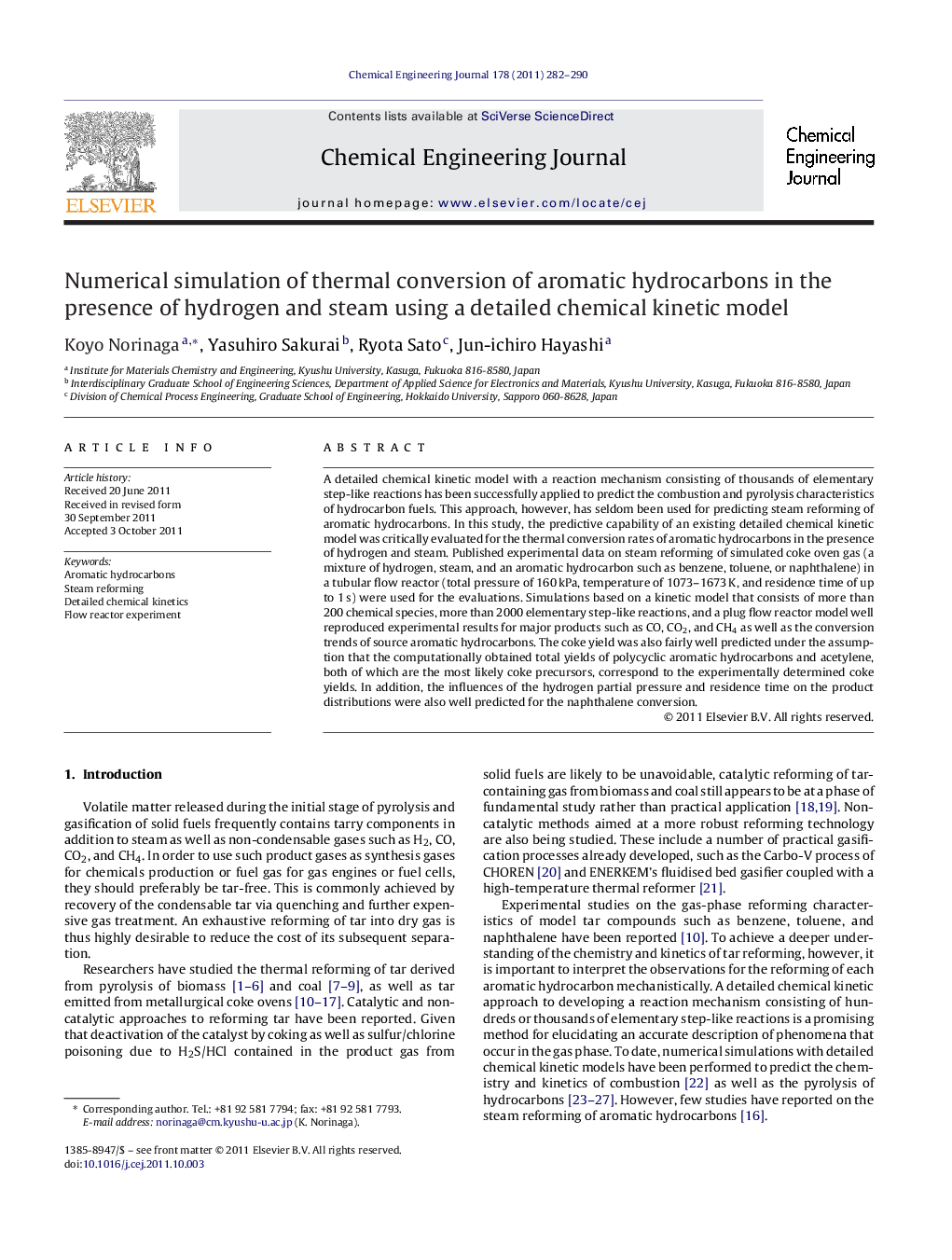| کد مقاله | کد نشریه | سال انتشار | مقاله انگلیسی | نسخه تمام متن |
|---|---|---|---|---|
| 150474 | 456450 | 2011 | 9 صفحه PDF | دانلود رایگان |

A detailed chemical kinetic model with a reaction mechanism consisting of thousands of elementary step-like reactions has been successfully applied to predict the combustion and pyrolysis characteristics of hydrocarbon fuels. This approach, however, has seldom been used for predicting steam reforming of aromatic hydrocarbons. In this study, the predictive capability of an existing detailed chemical kinetic model was critically evaluated for the thermal conversion rates of aromatic hydrocarbons in the presence of hydrogen and steam. Published experimental data on steam reforming of simulated coke oven gas (a mixture of hydrogen, steam, and an aromatic hydrocarbon such as benzene, toluene, or naphthalene) in a tubular flow reactor (total pressure of 160 kPa, temperature of 1073–1673 K, and residence time of up to 1 s) were used for the evaluations. Simulations based on a kinetic model that consists of more than 200 chemical species, more than 2000 elementary step-like reactions, and a plug flow reactor model well reproduced experimental results for major products such as CO, CO2, and CH4 as well as the conversion trends of source aromatic hydrocarbons. The coke yield was also fairly well predicted under the assumption that the computationally obtained total yields of polycyclic aromatic hydrocarbons and acetylene, both of which are the most likely coke precursors, correspond to the experimentally determined coke yields. In addition, the influences of the hydrogen partial pressure and residence time on the product distributions were also well predicted for the naphthalene conversion.
► A detailed kinetic model was applied to predict thermal conversion of aromatics.
► Published experimental data was used for the model evaluation.
► Kinetic model was coupled with a plug flow reactor model.
► Simulation reproduced flow reactor experiments very well.
► Effects of hydrogen pressure and residence time were also well monitored.
Journal: Chemical Engineering Journal - Volume 178, 15 December 2011, Pages 282–290